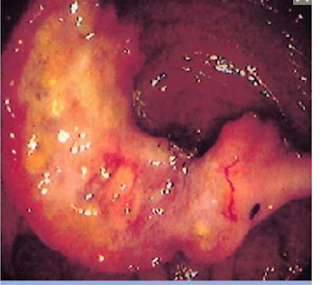Cold Vs flu
The flu’s common symptoms of fever, body aches, and fatigue can leave many confined to bed until they get better. Flu symptoms will show up anywhere from one to four daysTrusted Source after infection.
Common flu symptoms
The most common symptoms of the flu are:
fever over 100.4˚F (38˚C)
chills
fatigue
body and muscle aches
loss of appetite
headache
dry cough
sore throat
runny or stuffy nose
While most symptoms will taper off one to two weeks after onset, a dry cough and general fatigue can last several more weeks.
Other possible symptoms of the flu include dizziness, sneezing, and wheezing. Nausea and vomiting are not common symptoms in adults, but they sometimes occur in children.
Stomach flu
An illness commonly known as the “stomach flu” refers to viral gastroenteritis (GE), which involves inflammation of the stomach lining. However, stomach flu is caused by viruses other than influenza viruses, so the flu vaccine will not prevent stomach flu.
In general, gastroenteritis can be caused by a number of pathogens, including viruses, bacteria, and parasites, as well as noninfectious causes.
Common symptoms of viral GE include mild fever, nausea, vomiting, and diarrhea. On the other hand, the influenza virus doesn’t typically cause nausea or diarrhea, except sometimes in small children.
It’s important to know the difference between the symptoms of regular flu and the stomach flu so you can get proper treatment.
Young children, the elderly, and those with poor immune system function are at higher risk for complications related to untreated viral GE. These complications can include severe dehydration and sometimes death.
Pneumonia symptoms
Pneumonia is a common complication of the flu. This is especially true for certain high-risk groups, including people over 65, young children, and people with already weakened immune systems.
Visit an emergency room immediately if you have symptoms of pneumonia, including:
a severe cough with large amounts of phlegm
difficulty breathing or shortness of breath
fever higher than 102˚F (39˚C) that persists, especially if accompanied by chills or sweating
acute chest pains
severe chills or sweating
Untreated pneumonia can lead to serious complications and even death. This is especially true in older adults, tobacco smokers, and people with weakened immune systems. Pneumonia is particularly threatening to people with chronic heart or lung conditions.
Preventing the flu
The best way to avoid flu symptoms is to prevent the spread of the virus in the first place. Anyone 6 months of age and olderTrusted Source should get an annual flu vaccination.
Flu shots are also recommended for pregnant women. While not completely foolproof, the flu vaccine can significantly decrease your risk for catching the flu.
You can also prevent getting and spreading the flu by:
avoiding contact with others who are sick
staying away from crowds, especially at peak flu season
washing your hands frequently
avoid touching your mouth and face, or eating foods before washing your hands
covering your nose and mouth with your sleeve or a tissue if you need to sneeze or cough

MD mkhadar Ali
Common flu symptoms
The most common symptoms of the flu are:
fever over 100.4˚F (38˚C)
chills
fatigue
body and muscle aches
loss of appetite
headache
dry cough
sore throat
runny or stuffy nose
While most symptoms will taper off one to two weeks after onset, a dry cough and general fatigue can last several more weeks.
Other possible symptoms of the flu include dizziness, sneezing, and wheezing. Nausea and vomiting are not common symptoms in adults, but they sometimes occur in children.
Stomach flu
An illness commonly known as the “stomach flu” refers to viral gastroenteritis (GE), which involves inflammation of the stomach lining. However, stomach flu is caused by viruses other than influenza viruses, so the flu vaccine will not prevent stomach flu.
In general, gastroenteritis can be caused by a number of pathogens, including viruses, bacteria, and parasites, as well as noninfectious causes.
Common symptoms of viral GE include mild fever, nausea, vomiting, and diarrhea. On the other hand, the influenza virus doesn’t typically cause nausea or diarrhea, except sometimes in small children.
It’s important to know the difference between the symptoms of regular flu and the stomach flu so you can get proper treatment.
Young children, the elderly, and those with poor immune system function are at higher risk for complications related to untreated viral GE. These complications can include severe dehydration and sometimes death.
Pneumonia symptoms
Pneumonia is a common complication of the flu. This is especially true for certain high-risk groups, including people over 65, young children, and people with already weakened immune systems.
Visit an emergency room immediately if you have symptoms of pneumonia, including:
a severe cough with large amounts of phlegm
difficulty breathing or shortness of breath
fever higher than 102˚F (39˚C) that persists, especially if accompanied by chills or sweating
acute chest pains
severe chills or sweating
Untreated pneumonia can lead to serious complications and even death. This is especially true in older adults, tobacco smokers, and people with weakened immune systems. Pneumonia is particularly threatening to people with chronic heart or lung conditions.
Preventing the flu
The best way to avoid flu symptoms is to prevent the spread of the virus in the first place. Anyone 6 months of age and olderTrusted Source should get an annual flu vaccination.
Flu shots are also recommended for pregnant women. While not completely foolproof, the flu vaccine can significantly decrease your risk for catching the flu.
You can also prevent getting and spreading the flu by:
avoiding contact with others who are sick
staying away from crowds, especially at peak flu season
washing your hands frequently
avoid touching your mouth and face, or eating foods before washing your hands
covering your nose and mouth with your sleeve or a tissue if you need to sneeze or cough

MD mkhadar Ali



Comments